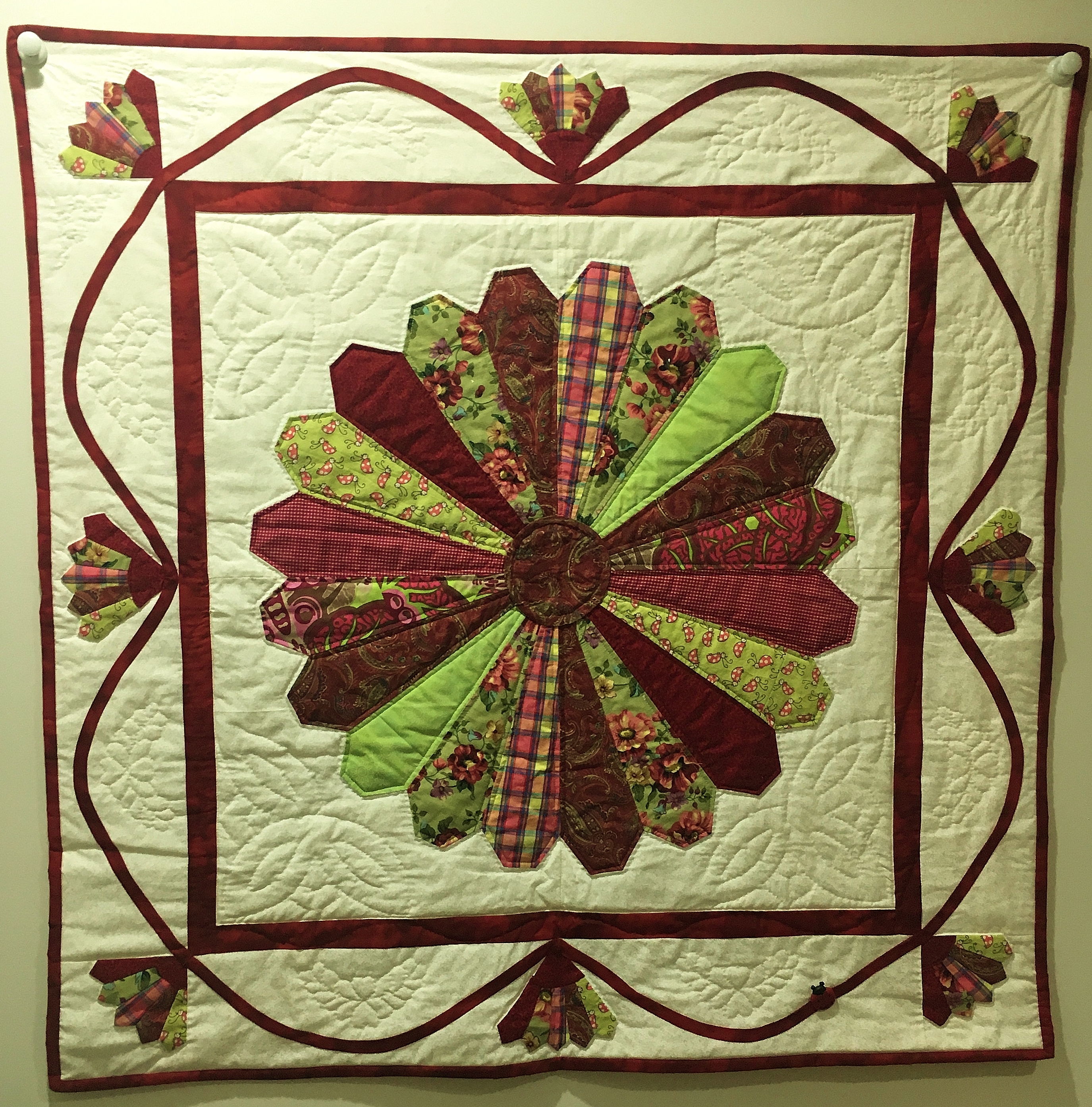
Martha Stewart was making a genoise cake on her cooking show one morning. It was a four-story affair, with plenty of fruit and butter cream icing. And while I love baking and I enjoy eating the results, there were many more steps to making this than I wanted to be bothered with. Granted she was making this as a party cake, so it had to look professional, but she promised it would be easy and fun. I had my doubts and wondered, how long does Martha feel she has to prove herself? Or was it really me who felt I had to be perfect?
This insight was brought home a little while later at my quilting guild. Every year there was a quilt challenge with a new theme. That year, we were to take a piece of the provided material, which was ghastly—lime green, spattered with bright pink tentacles, sprinkled with what could only be described as eyeballs. The challenge was to do something creative with it. I decided not to get involved with yet another project, but the material would not let me alone. I kept looking at it thinking there had to be a way to make it attractive.
After going through every bin of material I owned—and this was sizable (embarrassing how much one woman can accumulate), I found many coordinating fabrics. I started putting them together with the ugly one, and soon the fabric not only blended in with all the other patterns but seemingly disappeared. The project ended up as a pretty, multi-patterned, hand-quilted wall hanging with crisp red swirls as a border.
My quilt didn’t win any prizes at the judging, but got plenty of votes. This was comforting and yet something kept gnawing at me. The competition had stated we were to be creative with the ugly fabric. Why did I feel compelled to hide it? Were there parts of me not so pretty or perfect that I wanted to hide or at least disguise them? How come there are unattractive parts of us any way? Aren’t we supposed to embrace all of ourselves with love and compassion?
The answer to these questions turned out to be yes, of course—embrace yourself, but also know that the ugly is there to be a foil to the beautiful. If we don’t have any comparison, how will we know what is beautiful? Here, again, universal law appeared and showed its wisdom, as it does everywhere in the universe.
The Principle of Polarity
Everything is Dual; everything has poles; everything has its pair of opposites; like and unlike are the same; opposites are identical in nature, but different in degree; extremes meet; all truths are but half-truths; all paradoxes may be reconciled. –The Kybalion[1]
The idea was to blend the two. Put the ugly and the beautiful together to get harmony and balance—which was precisely what I did with the wall hanging. What I was teaching myself was that acceptance of the ugly is key; blended with beautiful makes a complete package. Denial of ugliness would be counter-productive to understanding the wisdom.
“Make friends with your blemishes and have gratitude,” a wise voice then said to me. “Because it is with those that you learn and evolve to become the beloved ascended human that you are working so hard on accomplishing.”
If
I ever get around to baking a four story cake, mine, in all probability, won’t
look like Martha’s. But instead of cursing its inadequacies, I realize
it’s more important to embrace the beauty of our expression and opt for
excellence rather than complete perfection.
[1] [1] Three initiates. The Kybalion. New York:Tarcher/Penguin, 2008. Print. p. 3

